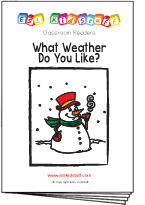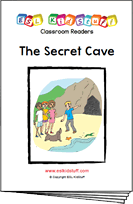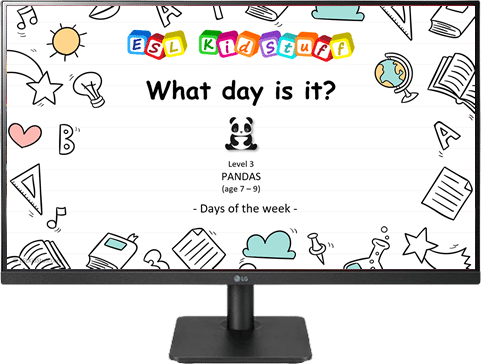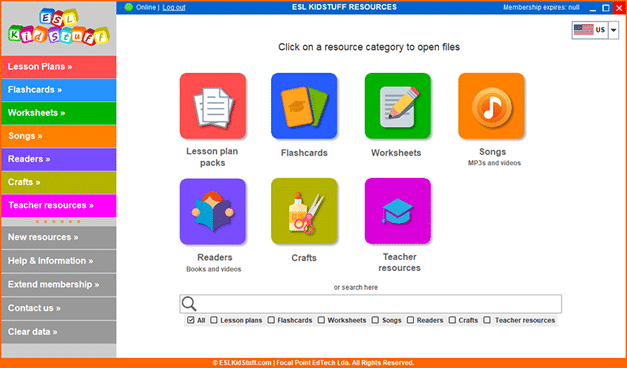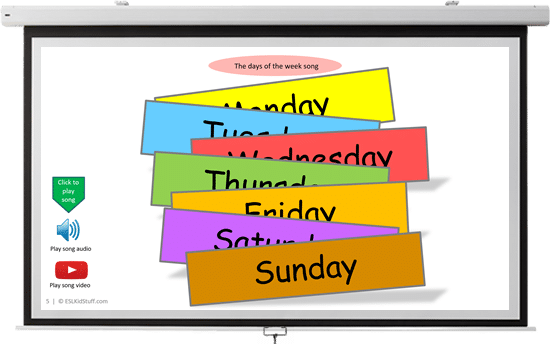Weather lesson plan
“I like sunny weather”
Lesson 6 Level 3 Age 7-9
Lesson plans for ESL kids teachers
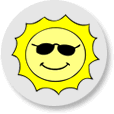
Lesson 6
Weather
This lesson plan introduces the theme of the weather and different weather conditions. Students play a weather-related games, read a story and listen to a song about the weather.
Members get accompanying worksheets, homework sheet, flashcards, reader and song.
Materials:
Our lesson plans are FREE!
Sign up for accompanying:
✔ worksheets
✔ homework sheets
✔ craft sheets
✔ flashcards
✔ PowerPoint lessons & multimedia
✔ song downloads & videos
✔ classroom readers & videos
Click to see lesson details, materials and supplies
Age: 7-9 years
Time: 1 hour – 1 hour 20 mins
Objectives: Talking about different weather conditions, asking about likes and dislikes for food, drinks and weather.
Structures: “I like ~”, “I don’t like ~”, “Do you like …?”, “Yes, I do”, “No, I don’t”, “How’s the weather?”, “Look outside”.
New vocabulary: orange juice, milk, tea, water, Coke / [hide_on_uk]soda[/hide_on_uk][hide_on_us]pop[/hide_on_us], chocolate milk, coffee, milkshake, sunny, rainy, windy, cloudy, snowy, foggy, hot, cold.
Review vocabulary: [hide_on_uk]cookie[/hide_on_uk][hide_on_us]biscuit[/hide_on_us], peas.
Lesson materials
Flashcards:
- Food (cheese, chocolate, rice, French fries, strawberries, bread, ice cream, grapes, pasta, pizza, beans, apple, orange, carrot, banana, pineapple, corn, cabbage, [hide_on_uk]cookie[/hide_on_uk][hide_on_us]biscuit[/hide_on_us], peas)
- Drinks (orange juice, milk, tea, water, Coke / [hide_on_uk]soda[/hide_on_uk][hide_on_us]pop[/hide_on_us], chocolate milk, coffee, milkshake)
- Weather (sunny, rainy, windy, cloudy, snowy, foggy, hot, cold) – 2 sets per group of 4 students
Printables:
- What weather do you like? – reader worksheet
- Weather match worksheet
Songs:
- The weather song
Readers:
- What weather do you like?
Supplies:
- name tags for each student
- a small ball
- board with markers / chalk
In this lesson students continue practicing asking and answering yes/no questions about likes and dislikes. They learn weather words, play some weather vocabulary games, listen to a weather song and read a weather story.
Lesson procedure:
Warm up and maintenance:

1. Greetings and name tags
Greet the students as they enter the classroom and gesture for them to sit down. Before class prepare some blank name tags (stickers or pin-on tags). Give these out and have everyone write their names and put their tags on. If you use pin-on tags, you can keep and give out every class.
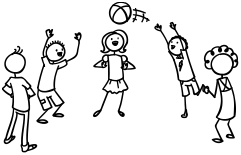
2. Ball pass questions
Get everybody standing in a circle. Throw a ball around, with students asking and answering questions on the below review topics as they throw/catch. Mistakes or wrong answers mean the student has to sit down and is out of that round.
Round 1:
Numbers 1-10 and classroom objects / stationery, e.g. “How many tables are there?”, “There are 6 tables”.
Round 2:
Food words (use a time limit to say a word).
Round 3:
Likes & dislikes for food – “Do you like cheese?”, “Yes, I do / No, I don’t”.

3. Homework check
Check each student’s homework that you set in the last lesson. Ask each student some questions about their homework worksheet (e.g. “Does your mother like pizza?”), give lots of praise, and then put some kind of mark on the homework sheet (e.g. a sticker, a stamp or draw a smiley face).

4. Play “Do you like …?” for food
Stick one of the food flashcards from last lesson onto the board. Elicit the question, “Do you like ~?” (with the food on the flashcard making the question). Students then say their answer (Yes, I do / No, I don’t).
Continue with the other food flashcards, filling up the board and asking / answering about their likes – this should be fast paced and fun.
New learning and practice:
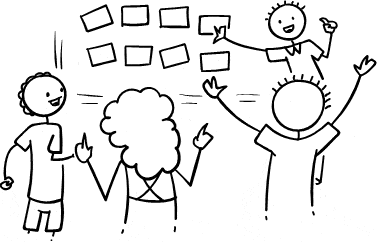
1. Play “Do you like …?” for drinks
We’ll continue reviewing the same yes/no questions, but this time with some popular drinks. Use the drinks flashcards and add them, one-by-one, to the board along with the food flashcards. For each drink card elicit / teach the word. Then chorus it 3x. Then ask everyone if they like it using the “Do you like ~?” question.
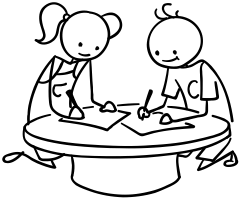
2. Read and write time
This segment can be part of all your lessons. Spend 10 to 15 minutes building up your students’ writing and reading skills. You’ll need to assess your students’ reading/writing level and then choose to start at one of the following stages:
1. Beginners: students cannot read or write the alphabet.
Each lesson introduce 3 lower-case letters of the alphabet (first lesson will be a, b, c). Use flashcards to do this. Play alphabet games and do printing worksheets.
» See our ‘Alphabet a-z (lowercase)’ mini-lesson plans for full details.
2. Early starters: students have experience with the alphabet but need phonics practice.
Each lesson introduce 5 lower-case letters of the alphabet (first lesson will be a, b, c, d, e). Use flashcards to do this. Start by working on the sounds of the letters and then move onto letter clusters (e.g. sh, ee, etc).
» See our ‘Alphabet’ and ‘Letter clusters’ mini-lesson plans for full details.
3. Early readers.
Work on reading and writing simple sentences with lots of practice activities.
» See our ‘Early reading’ mini-lesson plans for full details.
4. Elementary readers: students can read and write simple sentences well.
Work on reading and writing short texts and stories.
» See our ‘Reading short texts’ mini-lessons for full details.
3. Teach the weather vocab
Before class prepare weather flashcards and stick them around the walls of your classroom. At this point of the class, walk around the classroom touching the weather cards – say the words and do the following gestures.
- sunny: spread arms out
- rainy: wiggle your fingers downwards like rain
- windy: blow out of your mouth
- cloudy: make cloudy shapes with your hands
- snowy: wiggle your fingers downwards like snow and shiver
- foggy: close your eyes and feel in front like you are trying to feel for something you can’t see
- hot: fan your face
- cold: shiver and wrap your arms around your body
As you do this encourage your students to do the gestures and say the words with you.

Next, get all your students to stand up. Teacher shouts out a weather word (e.g. “It’s rainy!”) and students have to run over to the correct picture, touch it and do the gesture.
If you have a lot of students, it is worthwhile having multiple pictures of each card placed around the walls of the room.
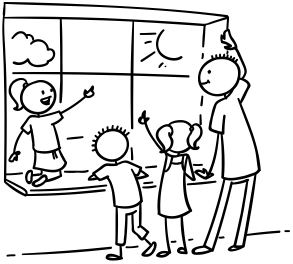
4. Talk about the weather outside
Motion for your students to come over to the window (or even outside). Say a few times, “How’s the weather?”, “Look outside”. Elicit from the class the weather and if it’s hot or cold (you can also teach “warm” if necessary). E.g. “It’s cloudy and rainy and cold”.
Then ask each student in turn, “How’s the weather?” and encourage them to reply. Also ask them if they like that kind of weather (e.g. “Do you like rainy / sunny / hot / cold weather?”).

5. Play flashcard concentration
Put the class into groups of 4. Each group will need two sets of weather flashcards. Model the activity first by having everyone watch you play with one group: shuffle the cards and lay them out face down on the floor. Turn over two cards. If they are different, turn them back over – it is the end of your turn. If they are the same (e.g. two sunny cards) you keep the cards (remove them from the game) and have another go. At the end, all of the cards will have been removed. The player with the most cards is the winner.
6. Play “The weather song“
Using the flashcards from the last activity, put students in pairs and give each pair one set of weather flashcards. Play the song and have students put the flashcards in the order they are sung in the song. The weather words are repeated twice so everyone should have a good chance of getting the order right on first listen.
Play the song again, this time putting the weather flashcards on the board in the right order, so students can check their order. Encourage everyone to sing along and do the weather gestures.
Lyrics for “The weather song“
Verse 1:
How’s the weather? How’s the weather?
Look outside.
How’s the weather? How’s the weather?
Look outside.
It’s sunny, it’s rainy, it’s windy, it’s cloudy. It’s snowy, it’s foggy, it’s hot, it’s cold.
Verse 2:
How’s the weather? How’s the weather?
Look outside.
How’s the weather? How’s the weather?
Look outside.
It’s sunny, it’s rainy, it’s windy, it’s cloudy. It’s snowy, it’s foggy, it’s hot, it’s cold.
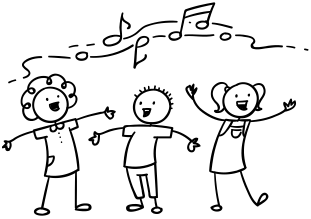
Gestures for “The weather song“
There are some easy gestures you can do as you sing along to the song:
- For the question part “How’s the weather?”, sing along and do the ‘palms of the hands up’ question gesture.
- For the “Look outside” part, face the window and put your hand over your eyes (like a salute), as if you were looking into the distance.
- Use hand gestures for the weather words:
- sunny: slowly spread your arms out
- rainy: wiggle your fingers downwards like rain
- windy: gesture wind blowing out of your mouth
- cloudy: make cloudy shapes with your hands
- snowy: wiggle your fingers downwards like snow and shiver
- foggy: close your eyes and put your hand out in front like you are trying to feel for something you can’t see
- hot: fan your face
- cold: shiver and wrap your arms around your body
FREE SAMPLE (full-length song):
[hide_on_uk][/hide_on_uk]
[hide_on_us][/hide_on_us]
7. Read classroom reader “What weather do you like?“
This reader ties in nicely with the lesson and allows students to say which weather conditions they like. Before class, download and print off the reader “What weather do you like?” from our website. As you go through each page, point to the pictures and elicit each key word, for example:
Teacher: What is this?
Students: It’s a flower.
Teacher: And how’s the weather?
Students: It’s sunny!
Teacher: That’s right! …(reading) … “I am a flower. I like sunny weather”. Do you like sunny weather Ken?
Student (Ken): Yes, I do.
Get the students really involved in the story by asking lots of questions (e.g. eliciting [hide_on_uk]colors[/hide_on_uk][hide_on_us]colours[/hide_on_us] and other objects) and getting them to tell you which weather they like. After reading the story, give out a reader worksheet to each student and read through the story one more time (without stopping for questions, etc.) as students match the characters in the story to the weather they like. Then have students draw the weather they like in the box
Alternatively, watch our video version of the reader (Internet connection required).
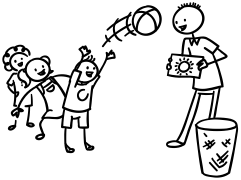
8. Play flashcard basketball
Students, in teams, take shots with a ball (or a scrunched up piece of paper) at a [hide_on_uk]trash can[/hide_on_uk][hide_on_us]bin[/hide_on_us]/box/etc. First show a flashcard to student 1. If s/he answers correctly then s/he can have a shot at the basket. If the student gets the ball in the basket then s/he wins 2 points. If the student hits the basket without going inside then s/he wins 1 point. The team with the most points is the winner.
Wrap up:

1. Assign homework: “Weather match“
Hold up the homework worksheet and model unscrambling the words, writing them and matching the word to a picture. Give out the worksheets and say, “Put your homework in your bags”.
1. foggy 2. sunny 3. rainy 4. hot 5. snowy 6. cold 7. cloudy 8. windy
2. Do “Quick check” and say goodbye
Time to leave the class. Make sure everything is put away and the students have gathered their belongings. Have them line up at the door and place yourself between the door and the students.

For each student check one new word by holding up a weather flashcard and asking, “What weather is this? Do you like ~ weather?”.
When they give you the correct answer say goodbye and let them leave. If their answer is wrong, have them go back to the end of the line – they will have to try again once they reach the front!
Other lesson plans
Levels:
Level 1 lessons (Age 3-5)
Level 2 lessons (Age 5-7)
Level 3 lessons (Age 7-9)
Level 4 lessons (Age 9-12)
Mini lessons (all ages)
Lessons in this level:
- Intro lesson
- In the classroom 1
- In the classroom 2
- Likes and dislikes 1
- Likes and dislikes 2
- Weather
- Clothes and weather 1
- Clothes and weather 2
- Days of the week
- Daily routines & time 1
- Daily routines & time 2
- Daily routines & time 3
- Daily routines & time 4
- Ability and family 1
- Ability and family 2
- Body and family 1
- Body and family 2
- Pets and possessions 1
- Pets and possessions 2
- Months and seasons 1
- Months and seasons 2
- Months and seasons 3
- Describing people 1
- Describing people 2
- Describing things 1
- Describing things 2
Special lessons:
- Christmas lesson
- Halloween lesson
- Easter lesson
- Thanksgiving lesson


